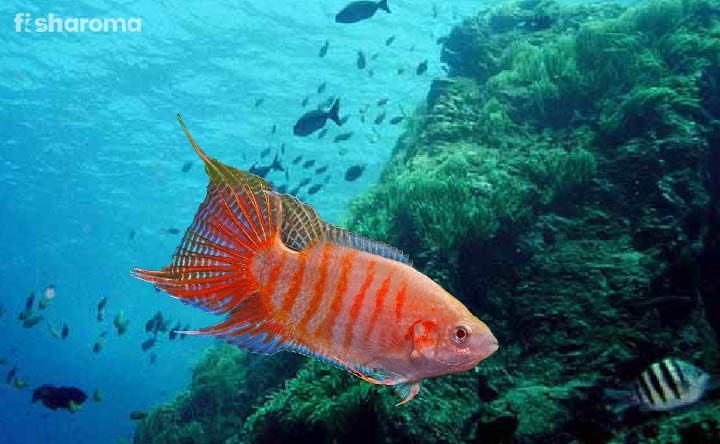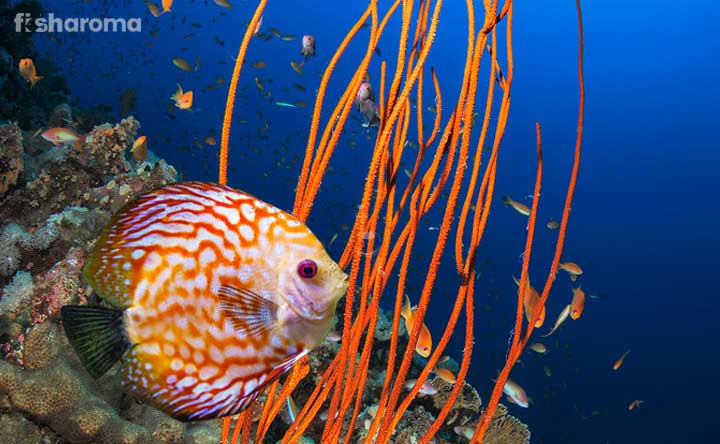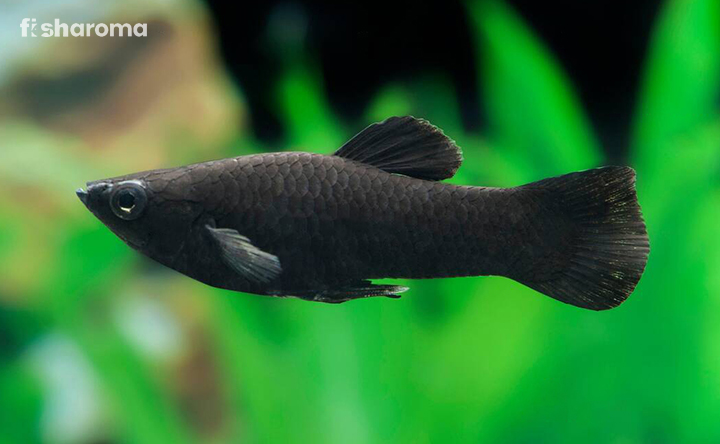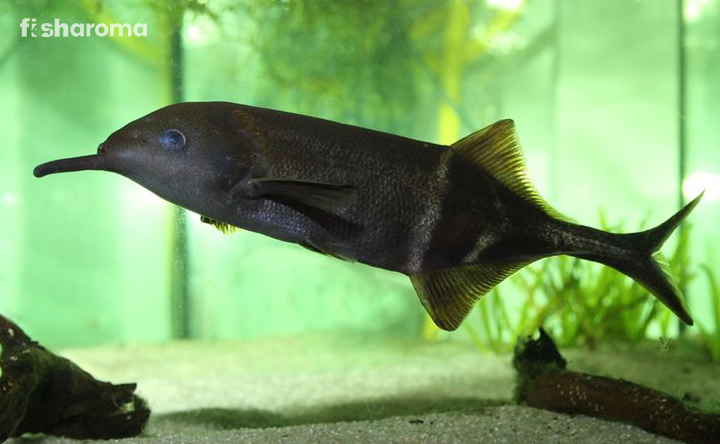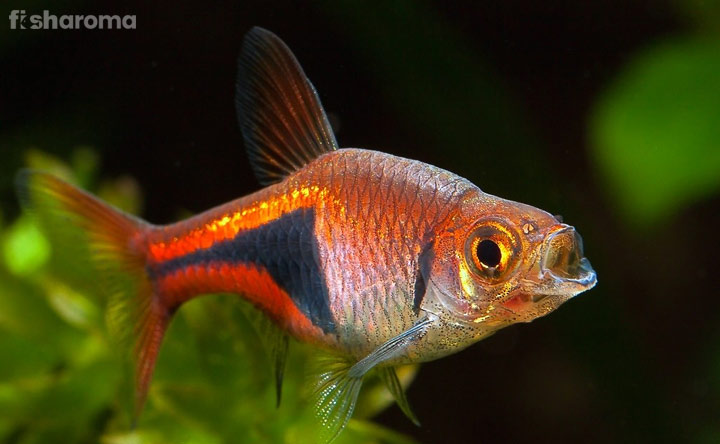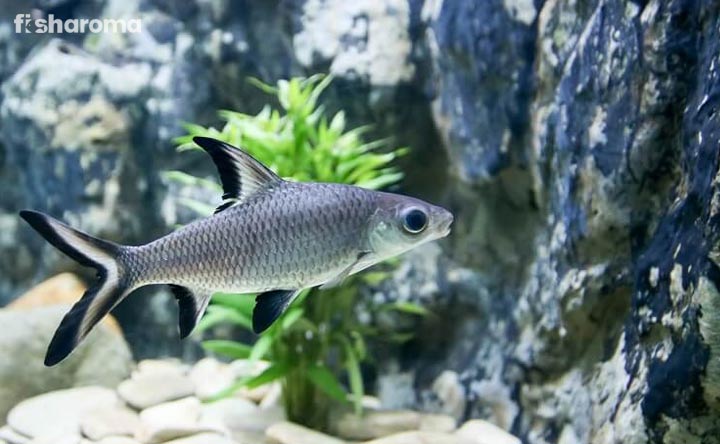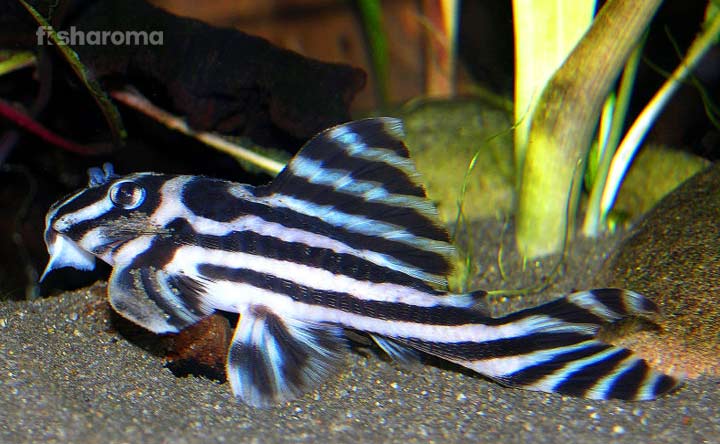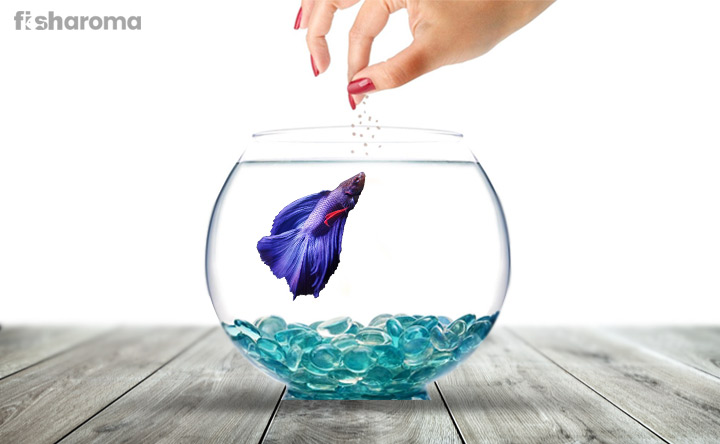Pea Puffer- A Care Guide To Our Unique Dwarf Pufferfish
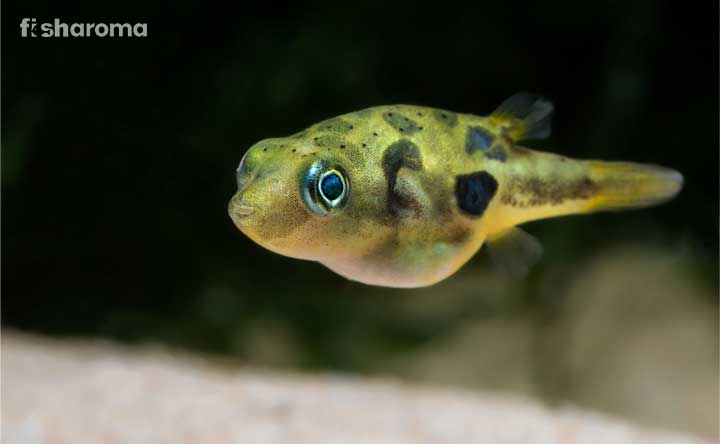
Pea Puffer is an extraordinary one, and they are also known by the names Dwarf Puffer, Malabar Pufferfish and Pygmy Pufferfish respectively. These exquisite little beings look extremely unique and active.
Their curious inspection attitude is rather worth your attention, as even you are not spared from being their subject of interest. So, if you’re planning ownership of these precious ones, let us help you out. Presenting you with our Ultimate Care Guide, where you will find everything you are looking for.
Key Specifications
Here goes a few key elements you need to check before you get started:
| Scientific Name | Carinotetraodon travancoricus |
| Origin | Rivers across Southern Karnataka and Kerala, Western Ghats, India. |
| Lifespan | 4-5 years |
| Colours/Patterns | Greenish-yellow base with dark spots. |
| Temperament | Aggressive and Territorial |
| Size | 0.98-1.5 inches |
| Diet | Carnivorous |
| Family | Tetraodontidae |
| Compatibility | Compatible mostly in a species-only tank/distance maintaining bottom-dwellers. |
| Tank size | 10 gallons |
| Care level | Intermediate |
| Water preference | Freshwater |
Overview
The magnificent Pea Puffer is from the Tetraodontidae family, which majorly consists of inshore and marine fishes. These aggressive little ones are pretty out there when it comes to caring tactics, but it surely requires a bit of learning. However, these freshwater wonders are very appealing to the eye. The Pea Puffers are mostly known for their activeness, which is a very fun thing to observe in an aquarium scenario. Nevertheless, despite the temperament limitations, their qualities and intelligence makes up for it all.
Origin and Habitat of Pea Puffer
Originating from Indian lands, the Pea Puffers or Malabar Pufferfish are mostly found in the Southern Parts of Karnataka and Kerala. Basically, they are mostly found in Southwest India, almost up to 13 rivers till the region of Western Ghats.
The Pea Puffers can’t naturally tolerate saltwater or brackish water. These diminutive beauties prefer their waters to have a slow-flowing current. Their size and their lack of swimming strength limits them from facing strong currents.
Ample presence of vegetation is also a yes-yes for them. Not only does it slow down the water flow, these Puffers just simply like it that way due to the presence of enough shadows and hiding spots.
Appearance of Pea Puffer
The Dwarf Pufferfish look like little bundles of beauty in the tank. Additionally, they are probably the most adorable freshwater species to exist, as per the majority of practitioners in the hobby.
Let us brief you up a little with their isolated external features:
Colour
Coming to the vibrancy, Pea Puffers are extremely attractive to look at. Their beautiful mix of yellow and green hued base, with evenly distributed patches or spots of black (maybe some other dark colour), is an actual treat to your vision.
Size
Pea Puffers are really small in size, growing just about 1.5 inches or even lesser. Still, it is good to not go by their size, as this fish’s temperament is astonishing regardless. (more on that in the behaviour section)
Behaviour of Pea Puffer
The temperament or behaviour of the Pea Puffers is striking, as despite their pretty small size, they don’t pass on being aggressive. On top of that, the combo of being territorial comes by default with their aggression. The essence of their true behaviour is not evident as juveniles, but once they have reached maturity, the behaviour gets worse.
Other than that, they are very active and curious beings who like to explore each and every corner of the tank. The active nature of these Puffers makes them very interesting to look at. Thus, looking at them swimming and swirling through the heavily planted tank environment, truly makes your day.
Lifespan of Pea Puffer
The Pea Pufferfish only live for about 5 years. In any case, the matter of life expectancy entirely depends upon how you care and provide for your fish and obviously, their genetic makeup. If that’s done right, there is no reason to worry.
Diet of Pea Puffer
The Pea Puffers are carnivores, so naturally, they are not a fan of plant matter or anything of that sort. Still, in their natural habitat, there may be some exceptions like feeding on microscopic algae. The setting of their teeth is distinct and they maintain the sharpness by chowing down on crunchy food items.
To give you a brief idea of some things that is fit to feed them, let us present you with this list:
- Larvae
- Insects
- Water Fleas
- Copepods
- Bloodworms
- Brine Shrimp
- Baby Shrimps
- Snails (Ramshorn)
- Frozen/Live alternatives
Tank Requirements for Pea Puffer
Let’s have a look at the things you must keep in mind:
Tank Lid
Tank Lid provides a decent number of advantages, and the major one being their ability to protect the aquarium water from being polluted. Moving on to the important bit, a lid is necessary for a Pea Pufferfish-tank as its active nature stimulates the jumping out tendencies. The same can seriously cause an unfortunate accident leading to injuries, or even death, thus a tank lid is important for that extra layer of protection.
Tank Size
The Pea Pufferfish are small, that does not mean they do not need much free space. Being wanderers of the water, these beauties require a bottom-line tank size of 10 gallons to thrive. We recommend you increase the tank size with increasing numbers, as these are shoaling fishes.
Substrate
The Pea Pufferfishes like their substrate to be coarse sand or small gravels stacked together. Since, they like a planted tank, the addition of aquarium soil on top is good, as it will support natural plant growth.
Filter
The process of filtration is important, a minimum of 10-25% water change with periodic routine discipline is necessary. It reflects on the overall health of the tank, where our precious Puffers reside. No matter how small they are, you must note that they produce a lot of waste. Thus, this puts even further emphasis on the importance of filters and the process of filtration itself.
Ornaments
To keep them entertained, it is good to add some caves, fragments of wood or even artificial plants to keep up with the environment. Addition of interesting, yet less overwhelming ornaments improve their overall mood.
Lighting
The Pea Puffers prefer diffused lighting, where there is an inherent balance in intensity. Exposure to natural light is fine at times in captivity, still to maintain the natural exposure, timing and concentration control is recommended.
Presence of Flora
These Pufferfish do well in a humbly planted tank with a lot of vegetation. Actual plants rooting from the layer of substrates, floating plants or anything natural is a good choice. Close emulation of their natural environment is the best way to go.
Cleaning Method
The Pea Puffers produce a large amount of waste, so periodic cleaning of the tank or water replacement is necessary. We suggest you also change the substrates from time to time, and clear the tank walls more often. This frees the fish from unwanted matter that will probably affect them.
Water Type for Pea Puffer
Water Type or the water parameters are of ultimate importance, especially when it comes to the health of the fish. Other than tank size or other requirements, the water profile is truly responsible for balancing the overall tank environment.
Moving forward, we know the importance of a proper water profile. Let us have a look at a few things you may need to know:
| Hardness | 4-15 KH |
| Temperature | 23-26 Degrees Celsius |
| pH | 6.5-8.0 |
Hardness
The Pea Pufferfishes prefer their water slightly towards the softer side, but neutral parameters work too. An alkaline range of 4-10 KH is a good balance.
Temperature
These Pea Puffers are hardy, capable of accepting a wide range of parameters. Still, sticking to the right measures is important, so a temperature range of 23-26 Degrees Celsius is needed.
pH
pH is directly linked to the health of the fish, so we recommend a range of 6.5-7.0.
Compatibility of Pea Puffer
In short, these Pea Puffers are of aggressive and territorial temperament. Hence, pairing them up is not exactly an easy task. Still, fishes fast enough to swim away from them or bottom-dwelling hiders or most peaceful fish do well with this fish.
Suitable Tank mates
To give you a proper idea, let us state a few buddies you can pair them up with:
- Otocinclus
- Cherry Shrimp
- Danios
- Kuhli Loach
- Neon Tetra
- Ember Tetra
Unsuitable Tank mates
Our magnificent Pea Puffers are unstable with most peaceful species, especially the ones who disrupt their space. They are clearly unfit for a peaceful community and can only co-exist with most bottom-dwelling species. For their small size, they are not compatible with most large fish.
Even in a species-only tank, they are capable of causing havoc if left unchecked. Last but not the least, these species are fin nippers, so they will target slow or long-finned variants of fish if given the chance. This conclusively makes big, slow and peaceful fishes out of the question, entirely.
Breeding of Pea Puffer
Breeding the Pea Puffers is fortunately not that complicated of a task, but a good sense of technique is advantageous. Although a separate breeding tank is not really needed, still the usage of one is not a bad idea. If you opt for the separate breeding tank option, make sure it is half the original tank’s size. Keeping the fishes together, helps in keeping the water temperature on the warmer side.
These fishes lay eggs, so in this scenario usually the male specimen follows the female to a densely planted region in order to fertilize the eggs. After this process is done, the eggs need to be left the way it is at least for a couple of days. After the off-springs have successfully hatched, and the yolk layer is no more, you need to feed them with either baby shrimps or something along that line. Feedable that can prove to be beneficial for the growth of the young specimen is recommended.
Diseases of Pea Puffer
These Pea Puffers may not have worry-some species-specific diseases, but they are very well prone to be affected by most freshwater fish diseases.
Let us name you some common freshwater diseases that are capable of affecting our Puffer’s health:
- Bacterial Diseases- The alterations occurring in the ecosystem of freshwater not only leads to the birth of most microorganisms, but it is also equally responsible for the creation of Pathogens. Bacterial diseases like Tuberculosis in fishes, Dropsy, Columnaris, Fin Rot and more, can affect the fish in ways you would not imagine.
In case of the disease “Dropsy”, an unusual fluid is stored inside the tissues and cavity of the fish’s body. This disease single-handedly is capable of indicating several underlying causes, like the evident bacterial infection or liver damage.
- Parasitic Diseases- Originally known by the name of Ichthyophthirius multifiliis or as we know “Ich” is capable of seriously causing a bad effect to our Pea Pufferfish’s health. Thus, missing scales, trouble in the breathing process, inflicting bruises or even lethargy, these protozoan fish parasites can seriously hurt the fish, health-wise.
Treatment
A few ways of prevention and treatment are as follows:
- Keep an eye on the fish for the sake of early signs detection, in that way a remedy can be provided on time.
- You must maintain the quality of water in the tank by keeping a note of the required parameters.
- The ill lot needs to be separated immediately, as keeping the affected long enough will directly cause damage to the other healthy fishes in the same tank.
Summary
The little and precious Pea Puffers could possibly be a tricky choice, but it is surely worth it. They look immensely attractive in the tank with decently heavy and decorative vegetation. Their temperament may be a little complex but it does not overshadow the interesting aspects of the fish, starting from their activity to curious inspective nature in the aquarium.
To summarize it all, if you once get used to certain technicalities of the Puffer’s care regime, it gets easier. Pea Puffers truly deserve to be in your tank, in case you are planning an interesting addition with appeal.
Similar Care Guides You may like
- Bumblebee Catfish Care Guide: Similarly small species, growing just up to 3 inches are easy going with most small fishes. Know more about them right here!
- Cardinal Tetra Care Guide: These small Tetras are a little larger than Neon Tetras, but the similarity between them is uncanny. Neon tetras have been categorized above as one of the compatible tank mates, learn more about their relatives, the Cardinals, right here.
- Pufferfish Care Guide: More like the prime representation from the same family as Pea Puffers, these fishes have most things in common with them. From similar temperament to a few other features, learn more about these interesting fishes from here.

